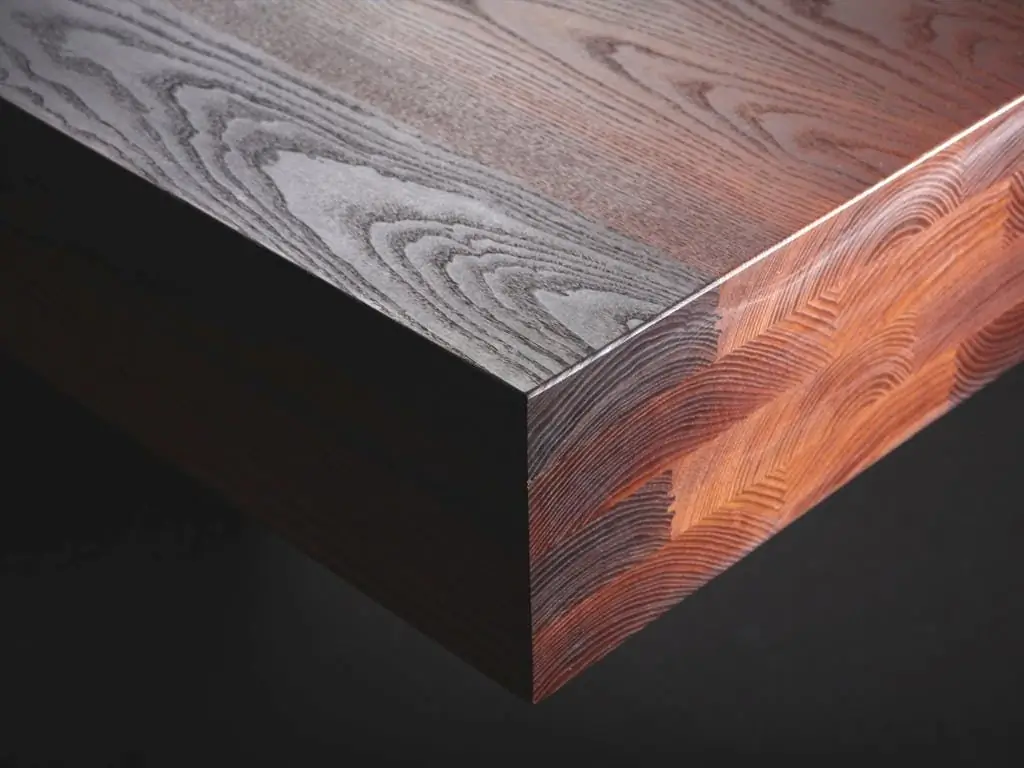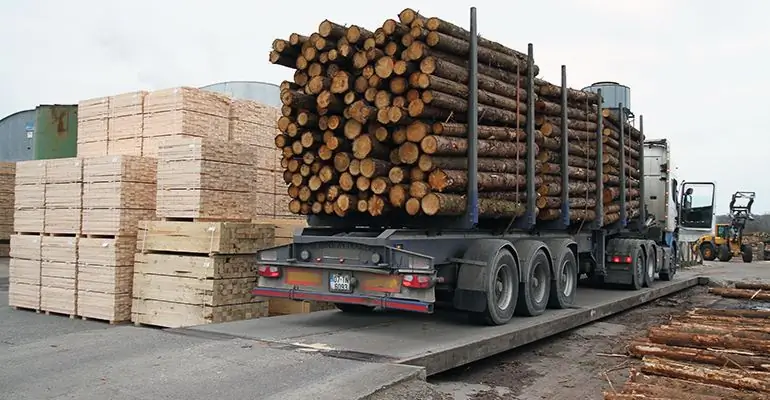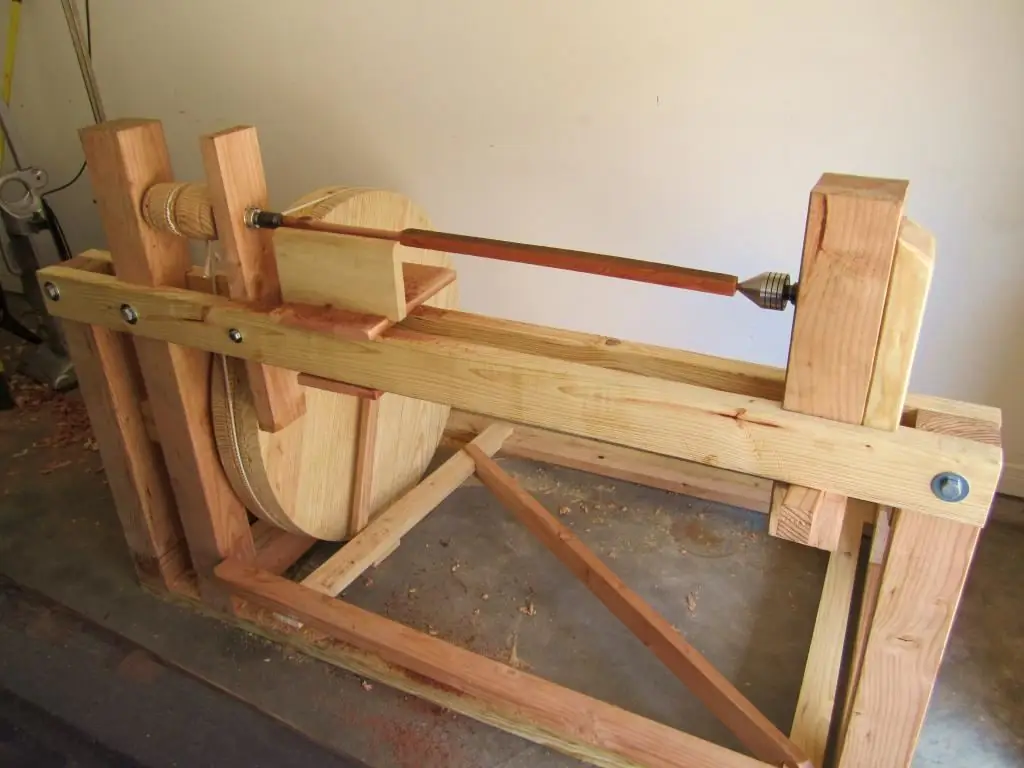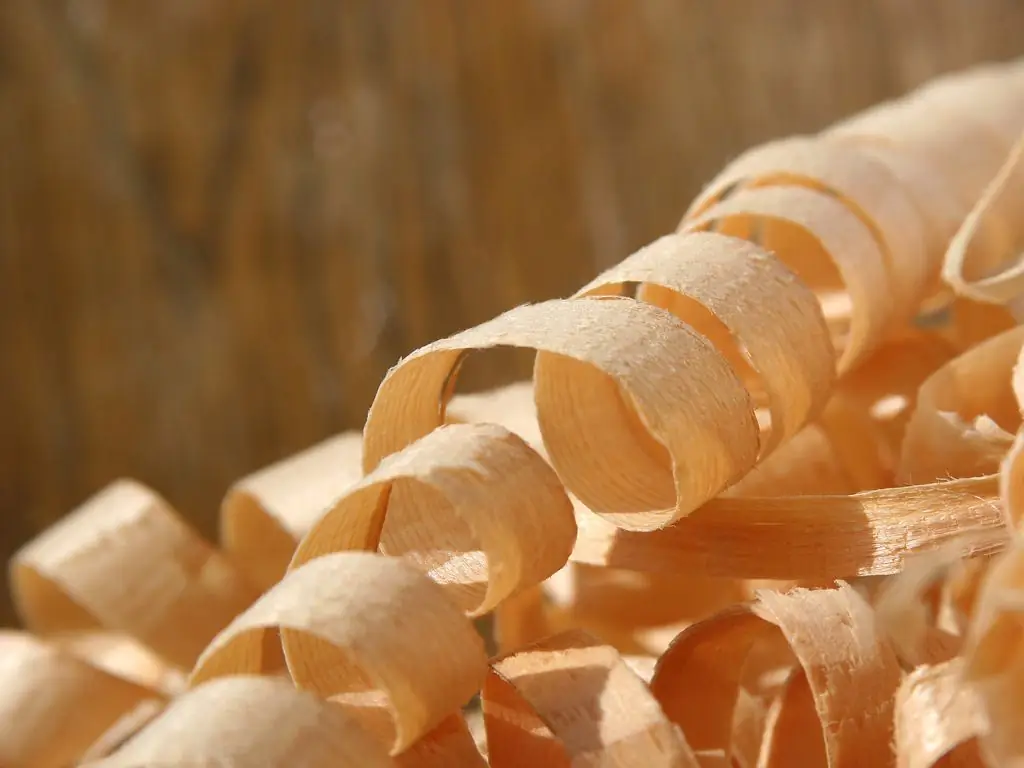2026 Author: Howard Calhoun | [email protected]. Last modified: 2025-01-24 13:10:37
Wood shavings are purposefully produced and used as a secondary raw material for the production of veneer, fertilizer, fuel, as a filler for packaging and decorative material. Unlike sawdust and wood chips, this material is not a woodworking waste. For the production of high quality chips, cutting waste is practically not used, preference is given to the prepared source material - beams, boards, logs. In other cases, by-products of wood processing and technological chips are used.
Differences from sawdust and wood chips
There are three types of chopped wood - shavings, chips and sawdust. The difference between them is not always obvious, therefore, GOSTs have been developed in Russia, drawing a clear line and defining the differences between these materials. GOSTs are useful to the buyer when the technological process for the manufacture of raw materials is not known. Sawdust is obtained by cutting wood, has a thickness of less than 1 mm, and a curl length of no more than 5 mm. Chips are a product of felling with thick fragments. Wood shavings look like a long flatcurl or needles, depending on the method of cutting the source material. Products are labeled according to GOST, as the price of raw materials of different types is different.
Types and characteristics of material
Due to its qualities, chips have become widespread in many industries. The use of chips in different areas is due to its characteristics:
- environmental safety;
- light weight with high volume and low moisture content;
- pleasant woody scent;
- low density;
- high cutting strength along the grain;
- low thermal conductivity;
- high combustion temperature of certain types of wood.
Crushed wood is classified according to several parameters and is divided into several types:
- by size - short, long and medium length;
- by type of wood - oak, pine, beech, aspen, etc.;
- according to the method of obtaining - manually or on the machine.
Unlike wood chips and sawdust, shavings are dried, so they contain the lowest moisture content and high calorific value. Additional parameters are the purity of the chip material, the shape, density and strength of the curl.

Manual and industrial production
Chips are produced manually and mechanically, using special equipment. Manually, the particles are cut off with a knife, chisel or planer, but this type of manufacturing is used only for home and summer cottages, whenthe quantities required are small. When cutting, a thin fraction with wrapped edges is formed, the length of which depends on the selected tool.
On an industrial scale, making by hand is unacceptable; machines for the production of wood chips are designed for this. According to their purpose, chipping and centrifugal machines are distinguished, which produce raw materials of various shapes. The latter produce needle chips by dividing the chips along the fibers to make single-layer and multi-layer wood-based panels.

What is it used for?
Possessing a lot of advantages, shavings are used in industry, in summer cottages, in decorative business. Depending on the type, raw materials are used:
- for the production of fiberboard, chipboard, OSB and furniture veneer;
- as briquettes for solid fuel boilers;
- as a bedding for livestock in animal husbandry, fertilizers at their summer cottage;
- for the production of thermal insulation and building materials;
- for packing fragile items;
- in the distillation of alcohols;
- for decorative purposes in landscaping or crafts.
Wooden shavings are used in the cognac industry, giving alcohol a pleasant aroma and flavor when smoking meat and fish.
Chip building materials
Arbolite contains up to 80 - 90% of organic material, which is small chips. The use of organic matter instead of chemical filler reduces the cost of cement board production. At the same time, wood concretesupports combustion and has sufficient strength characteristics for the construction of buildings up to three floors high. Wood concrete absorbs sound, while acting as a soundproofing material.

Particleboard, fiberboard are used for interior decoration, have low strength, but are cheap. OSB boards are glued under pressure using waterproof resins, used for furniture parts, formwork in construction, as a base for roofing light roofs and so on. Laminated particle boards have gained popularity in the manufacture of furniture elements.
Compressed chip insulation
Wood shaving insulation is produced in the form of blocks, slabs, granules or used in its pure form, in bulk. Suitable for insulating walls, floors, roofs and ceilings and is common in private construction. Insulation made from oak or larch has increased moisture resistance, unlike other species, and when mixed with chemical additives, its flammability decreases. Treatment with flame retardants and antiseptics allows you to increase the service life of insulating materials from other types of wood.

Chip insulation, despite its low cost, has disadvantages. This is the hygroscopicity of the material, susceptibility to decay. Insects and rodents start up in the insulating blocks, and the material itself loses some of its properties over time. But until now, chip insulation is considered the most environmentally friendly material in itscategories.
Combustible material
Having a high calorific value, chip briquettes made of coniferous wood are used as fuel for heating boilers, fireplaces. Cheapness and ease of manufacture, even at home, has made the use of fuel briquettes an alternative to wood, coal or diesel fuel.
When smoked, wood shavings act as a flavoring agent, giving meat and fish a special flavor and a golden surface. Softwoods are not used in smokehouses, fruit trees, oak and hornbeam are preferred.
Packaging and decorative material
Packaging materials are made from styrofoam and wood shavings. The latter also has a decorative role, as it looks attractive in a natural and colored form. Shavings for packaging fragile items are narrow, long and thin, similar to a tangled straw. Other names for such a filler are wood wool or hair. It is often used for gift packaging of elite alcohol, New Year's sets, fruits and gingerbread, dishes.
Wooden shavings for packaging can be combined with cardboard and wooden boxes of any shape, canvas bags, veneer tubes. Colored packaging shavings of different colors have gained popularity, which do not lose their aromatic properties after processing. With the help of colored shavings, the style of the gift is emphasized; it is used by companies to design original corporate sets. The environmental safety of the paint used allows the use of colored filler when packaging food products.gifts.

Decorative wood shavings are used for floristic purposes - when making bouquets and flower arrangements instead of sisal. In landscape design, it plays an important role in the design of the site, allowing you to loosen the soil at the same time. The shavings are also used to make various crafts, giving them an original shape and design.

Use of shavings on the farm
In the dacha economy, shavings are used as fertilizer and for mulching the soil. In summer, a layer of shavings keeps moisture in the ground, preventing drying out, and mulch waste is used as plant food. The remaining wood particles are disposed of naturally in the process of decay, forming a natural fertilizer.

Indispensable shavings in animal husbandry as bedding for livestock and poultry. The ability to absorb moisture allows you to keep the premises for animals dry and clean. For livestock purposes, shavings are produced taking into account the size of livestock and resinous wood species are not used.
Recommended:
Heat-treated wood: main characteristics, production technology, pros and cons

Almost every one of us has come across such a concept as heat-treated wood. However, few have thought about what it really means. Meanwhile, this material can be considered innovative. Due to the high temperature - from +150 °C to +250 °C - the material is strong and durable
Wood processing technology and production of wood products

Wood is an unusual and especially valuable material. For all its familiarity, it has an amazing set of technical and physical properties that a person cannot repeat with the help of synthetic substitutes. This is due to the extensive use of blanks made of natural wood in a variety of industries. Modern wood processing technologies and the production of wood products in general make it possible to provide people with furniture, building materials, decorations, utensils, etc
Polymer materials: technology, types, production and application

Polymeric materials are chemical high-molecular compounds that consist of numerous small-molecular monomers (units) of the same structure
Wood flour: production technology

The article is about wood flour. The technology of its manufacture, the equipment used, the use of material, etc. are considered
Wood planing: types, equipment and process technology

Wood planing is one of the types of processing of this material. This operation can be carried out both manually and on machines. It is important to understand that with the help of planing, any wood blank takes the desired shape and shape

